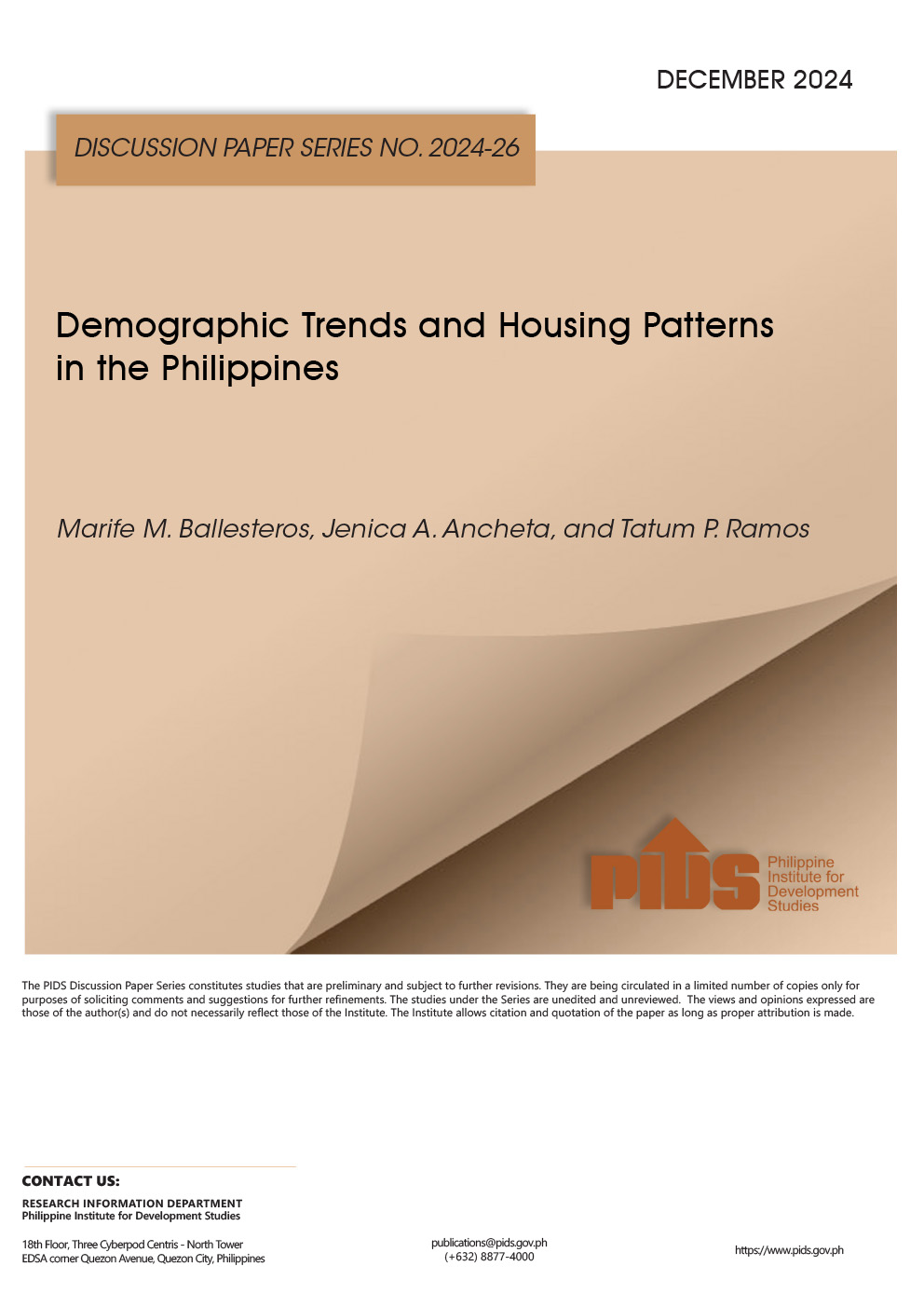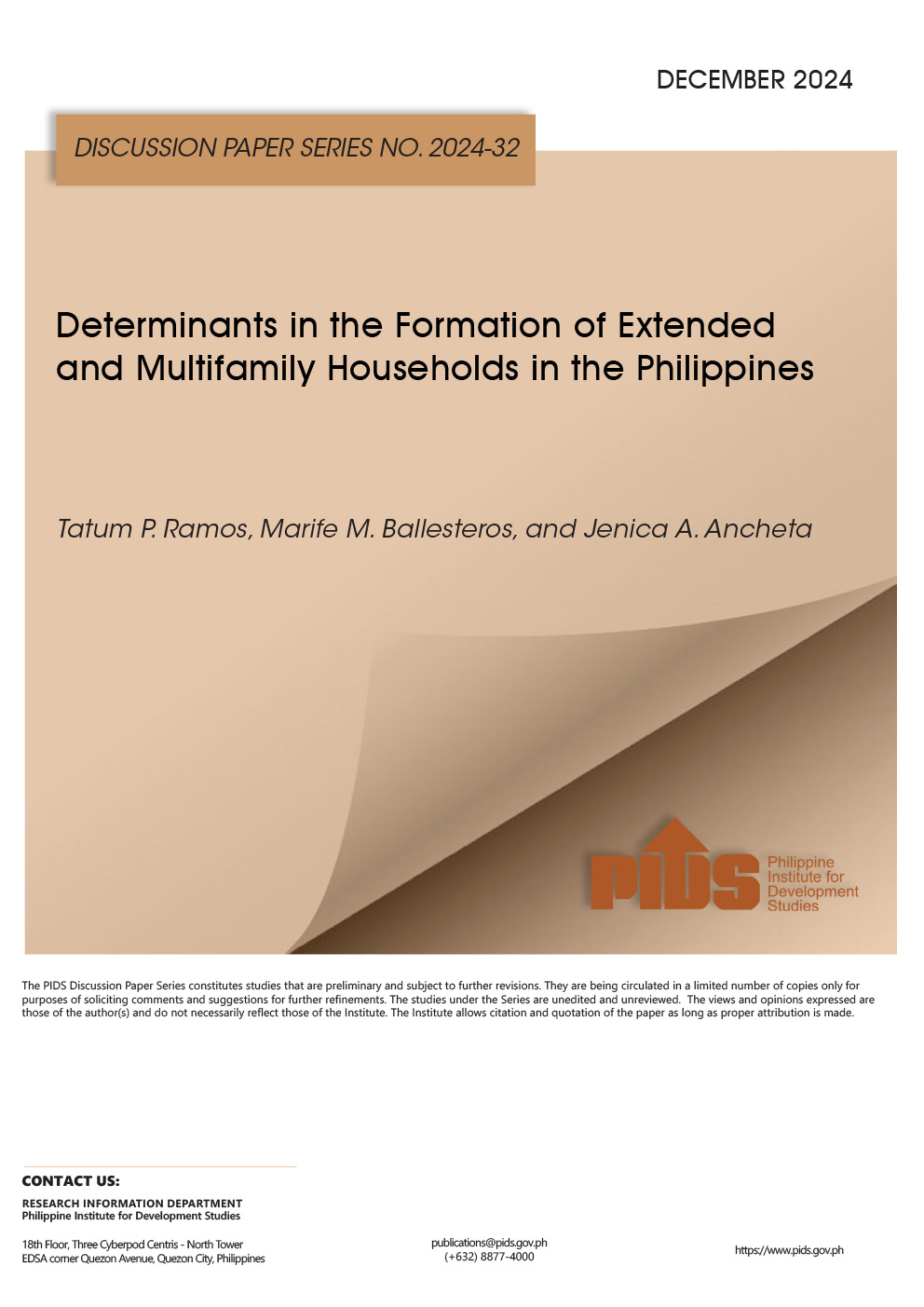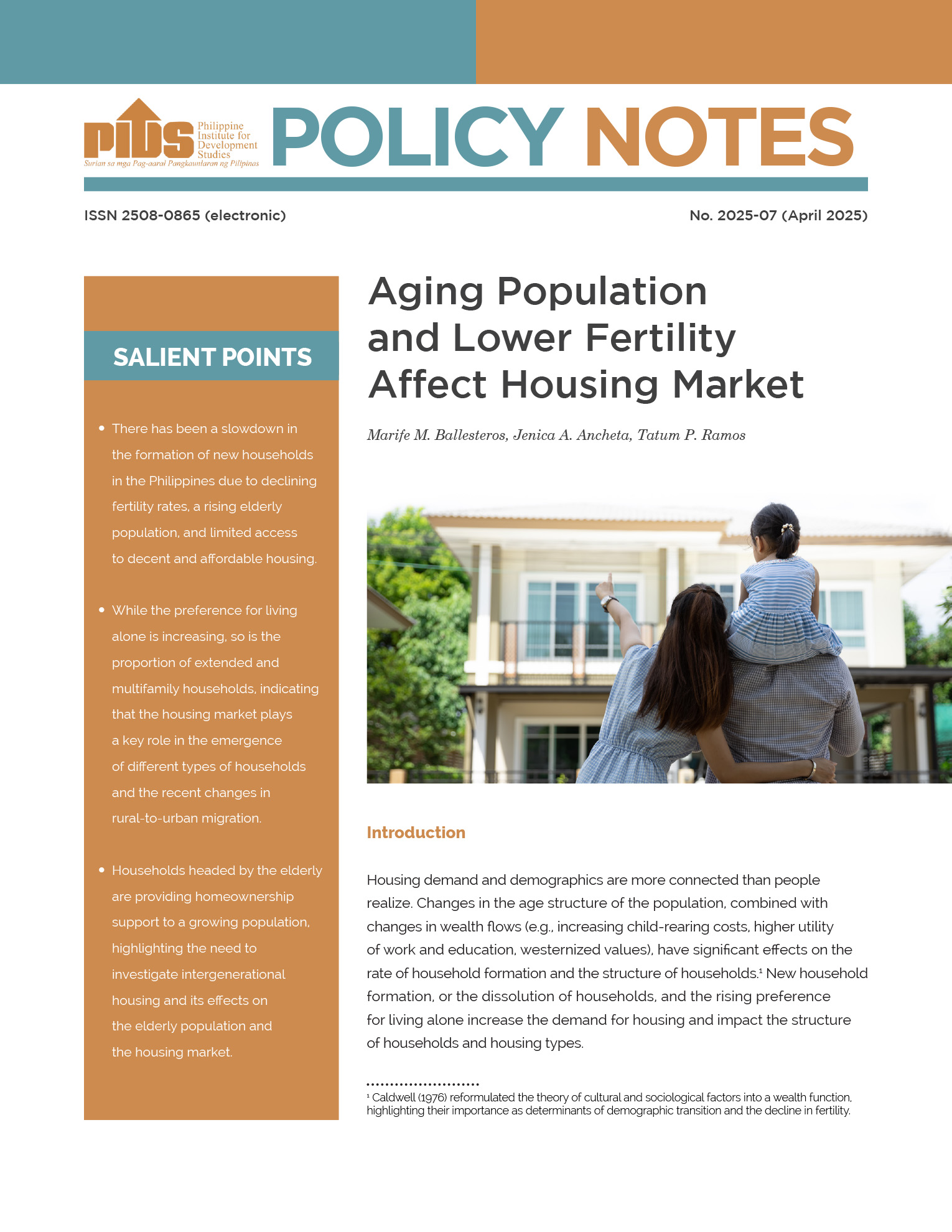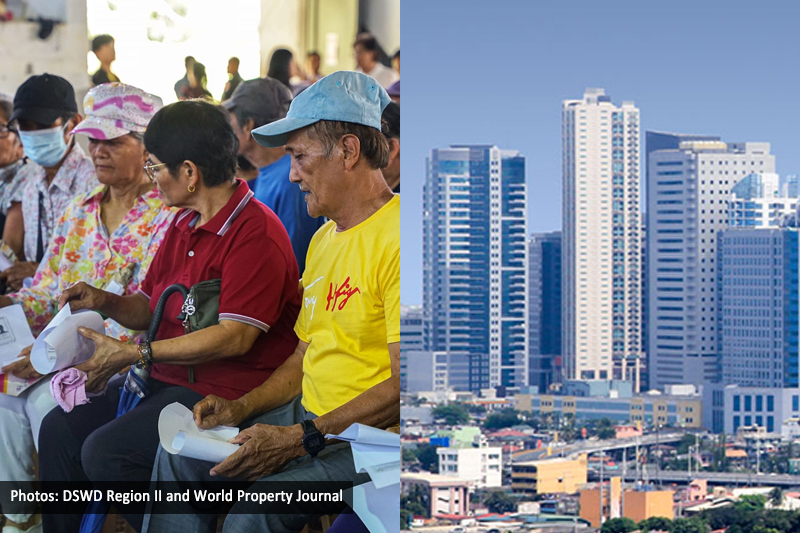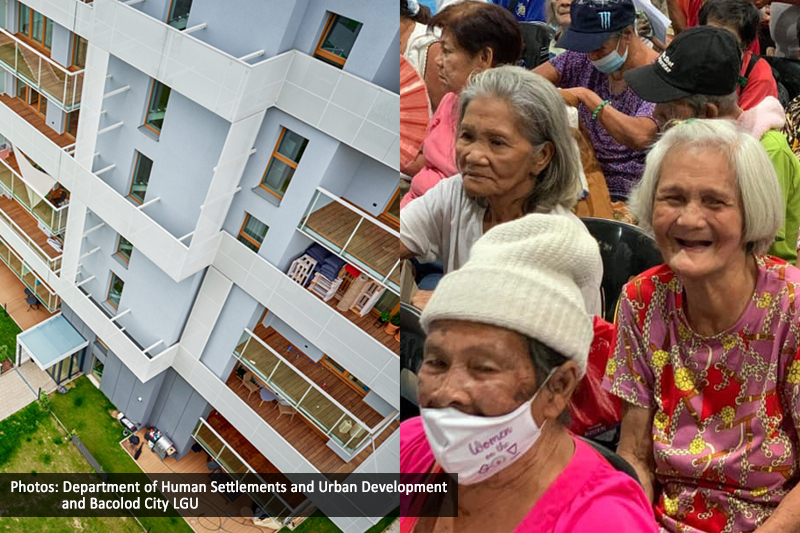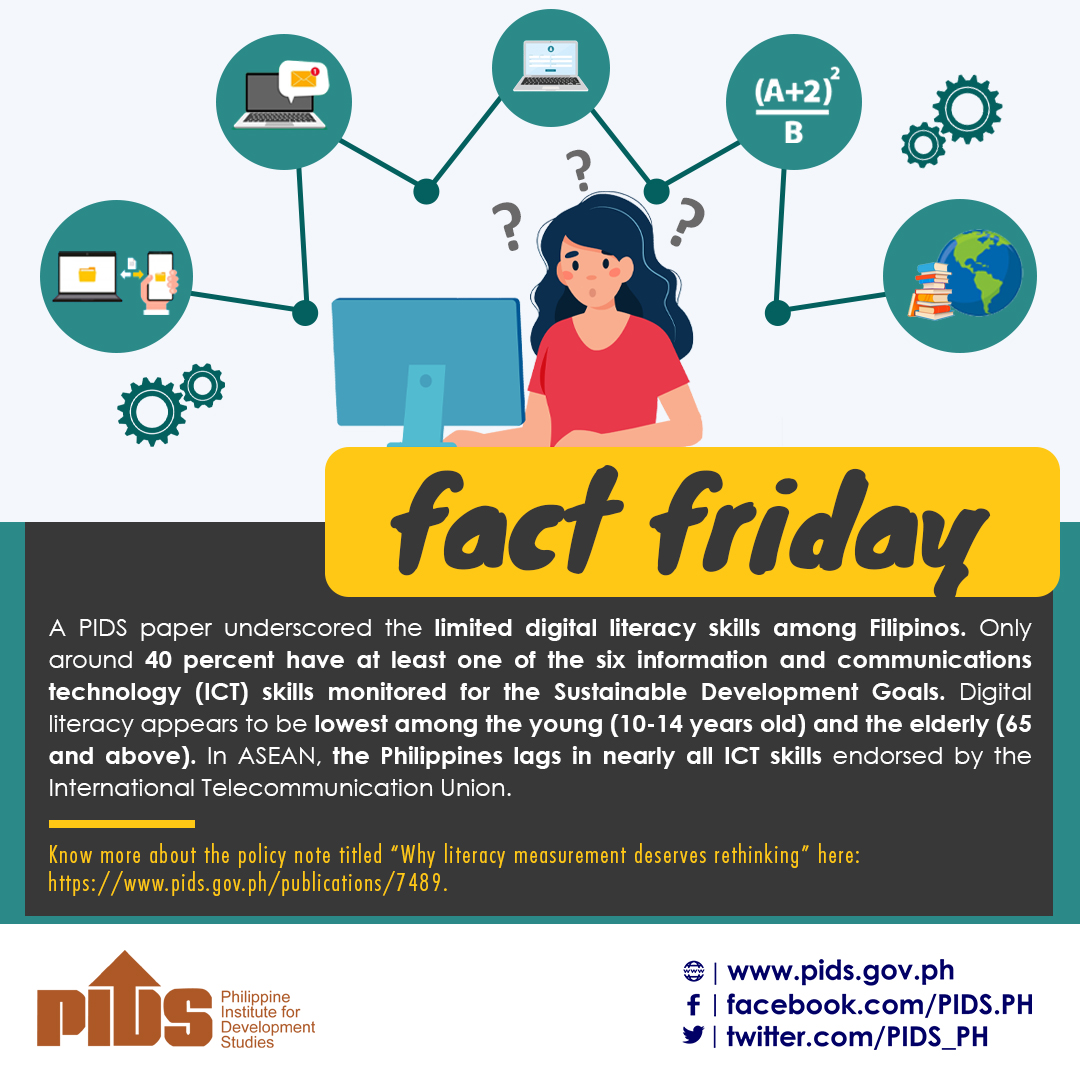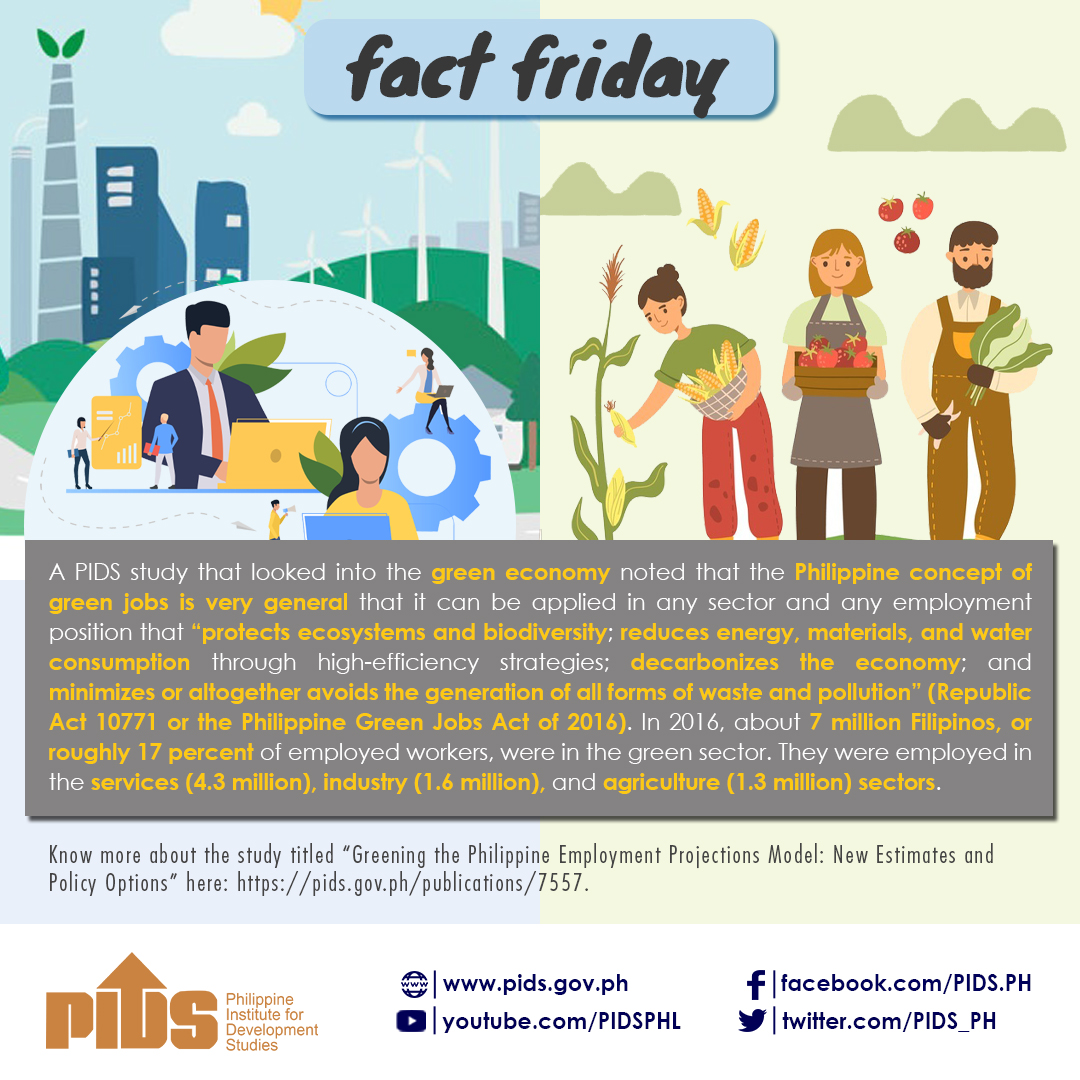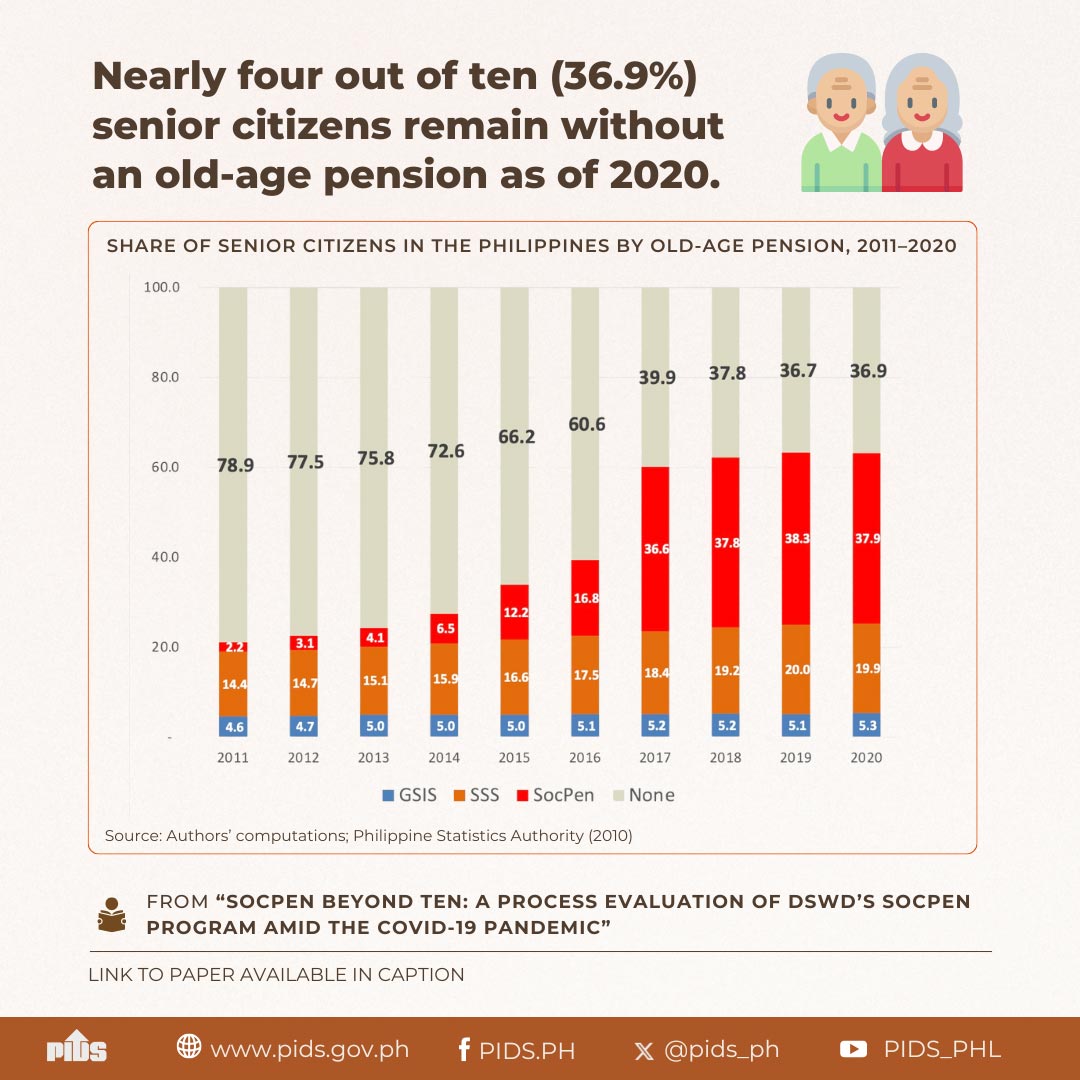HOUSING remains inaccessible for millions of Filipinos because they cannot afford it, especially low-income and large families as well as those who live in highly urbanized cities, according to a study released by the Philippine Institute for Development Studies (PIDS).
In a discussion paper, PIDS researchers led by Vice President Marife M. Ballesteros said most households can only afford socialized housing, which is often located far from employment or livelihood centers.
The researchers also said the standard of 30 percent of income used to estimate housing affordability may be too high for low-income households.
“The inability of the government to maintain a pool of affordable lands in cities and urban centers will further limit the supply of affordable housing in Metro Manila and other urbanizing cities,” the authors also said in the study.
The researchers also estimated shelter poverty in the country and found that even if poor families received a downpayment of 20 percent to avail themselves of socialized housing, they would not be able to make the amortization payments.
“It further implies that poor families, even if they are given the opportunity to avail socialized housing, will not be able to pay their amortizations. In other words, poor families would experience housing stress even at the price ceiling intended to facilitate their access to housing,” the authors said.
The study also said the 30-percent income standard is widely used and an accepted measure of the extent of housing affordability in the country.
Section 2 of Batas Pambansa 220 (BP 220) provides that socialized and economic housing should be within low-income and average earners’ affordability level, which is at 30 percent of gross family income as determined by the National Economic and Development Authority (Neda).
However, the researchers said the validity of the 30-percent income standard has not been fully established in the country. There was a dearth of research on the validity of the 30-percent standard and arguments that housing has become affordable over time.
The findings of the research showed that using the 30 percent standard, only 8 percent of families in urban areas would be placed under housing stress while the use of the Residual Income Method estimates that 21 percent of families are under housing stress.
“The finding is critical because if the Philippine government revises the socialized housing price ceiling based on housing stress evaluated through the 30-percent standard, many families that should be beneficiaries may be left out,” the PIDS researchers said.
The study also estimated that given this, there are affordable housing packages available for the poor. These packages are 30 years to pay at 6 percent interest rate and 30 years to pay at 8 percent interest rate.
For the low-income households, the researchers said ownership through mortgage finance is feasible but only for housing prices of P2 million and below.
Middle-income groups are likely to have access to home ownership and to the formal housing market given their capacity to qualify for housing packages priced at P4 million to P8 million.
“The low-income households can still afford socialized housing priced at the ceiling, but they can no longer afford economic housing priced above P1.5 million at the same loan terms,” the study stated.
In order to address the issue, the researchers recommended that the government undertake reforms to prevent speculative increases in land and residential prices and to reexamine the role of the public sector in the delivery of affordable housing.
Further, the government should provide affordable housing that would require an overhaul of the housing subsidy programs as well as the creation of a public housing fund to finance direct subsidies to households, public sector construction of affordable housing (for rent or ownership); and housing support in times of disaster.
At the town or city level, the researchers said Community Development Funds (CDFs) anchored to municipal councils should be established to support housing projects arising from urban renewal or upgrading or other urbanization challenges.

